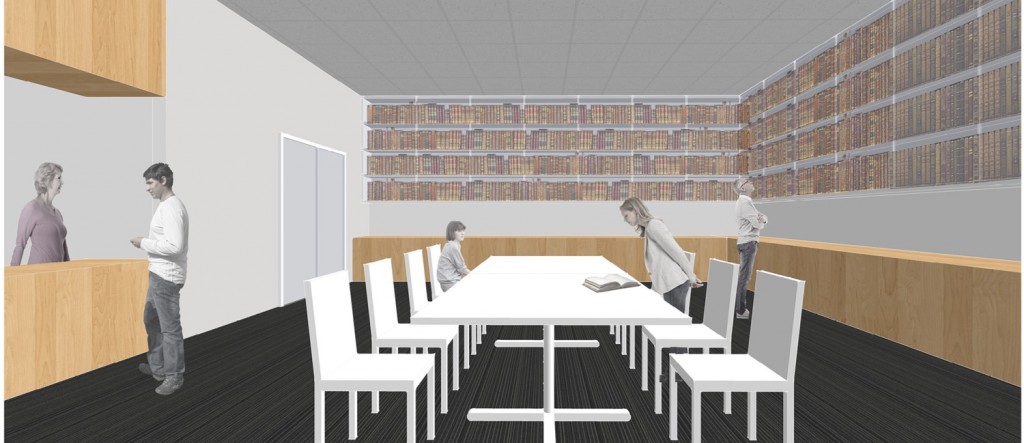
The Fitz Hall

The Fitz Hall:
The expansive two-storey great hall epitomises the features we aspire to create in the new facility. This ground-floor space of approximately 6,400 square feet will be an ideal space for fostering the collaboration and imagination of visitors. It will have an airy, atrium feel and will be the most prominent and visible space within the Commons. This is precisely the kind of space UBC Okanagan students have described: filled with flexible and adaptable areas whose furnishings can be easily reconfigured, from moment to moment, to suit the immediate needs of the users of that space.
Seating will accommodate 275 people, more than double the existing capacity of the current first floor of the adjacent Library. It will be used for a range of activities: gathering, socializing, mentoring, reading, individual and small-group learning, presentations and performances (in a series of large open areas not designated for quiet study), or simply hanging out. Most of the furniture will be organized into zones or clusters of small tables, large tables, and booth-style seating that provides space for small groups of people to work together, but still maintain some privacy, or to be seen by everyone, if preferred. Furniture will be moveable – with tables large enough to support collaborative learning – allowing students to arrange furniture as they choose.
Special Collections and Archives

Special Collection and Archives:
$250,000 Naming opportunity
The Special Collections, on the lower level of the Commons, will include a new vault, ensuring the long-term preservation and accessibility of materials. Considering the sensitive nature of the material, this will be one area of the Commons in which the pervasive exposure to natural lighting will be intentionally limited. Various items will be housed here in a secure and environmentally controlled environment: books, journals, ephemera, photographs, archival documents, maps, and artwork. Visitors interested in viewing an item will have access to a secure reading room – which can double as a small classroom to support student work with these primary sources – where the item can be studied in detail. This facility will greatly enhance our capacity to be a repository, and provide safe display space, for treasured publications and artifacts, including UBC Okanagan’s Public Art Collection, since our current facility is extremely limited in size and functionality.
Collaborative Study Rooms

Collaborative Study Rooms:
$25,000 Recognition Opportunity (x4)
Recognizing the varying nature of collaborative work in different fields of study and professions, we propose to create a variety of spaces to facilitate different activities, and which also foster distinctive and preferred atmospheres. Every room will have the basics: tables and chairs. However, many of them will be equipped with additional resources. Some of the spaces will encourage a more informal or relaxed environment by incorporating a whiteboard for jotting down ideas, and a scattering of bean bag chairs in lieu of traditional ones. Others will be highly connected electronically, equipped with: computer workstations, monitors, and projectors, allowing team members to share ideas on the various screens; and microphones to simulate remote communications, allowing for video-conferencing. Since this type of technology is used regularly in workplace environments, allowing for remote collaboration on a common project, it would also serve as an excellent real-world simulation that prepares students for future employment. The technology would also allow each member of the group to leave the session with his or her own digital copy of the team’s effort.
Students are now required to break into groups to perform specialized analyses of given case studies. Engineers often scribble equations and ideas onto a whiteboard. Meanwhile, management students might find greater benefit in workstations. These students would benefit greatly from case-study rooms, as the distinctive qualities of the space would accommodate and facilitate the collaborative work characteristics of their respective fields. A suite of case-study rooms will enhance the other types of study spaces that accommodate group and individual study throughout the new facility.
Reading Room Special Collections

Reading Room Special Collections
$200,000 Naming Opportunity
Students, scholars and visitors may use the well-appointed quiet reading room to access items in the archives and special collections. Archive staff will provide advice and service for projects and special-interest material review. Although located at the entrance to the unit, and just off the Fitz Hall, the Reading Room will be a secure facility for scholarly work.